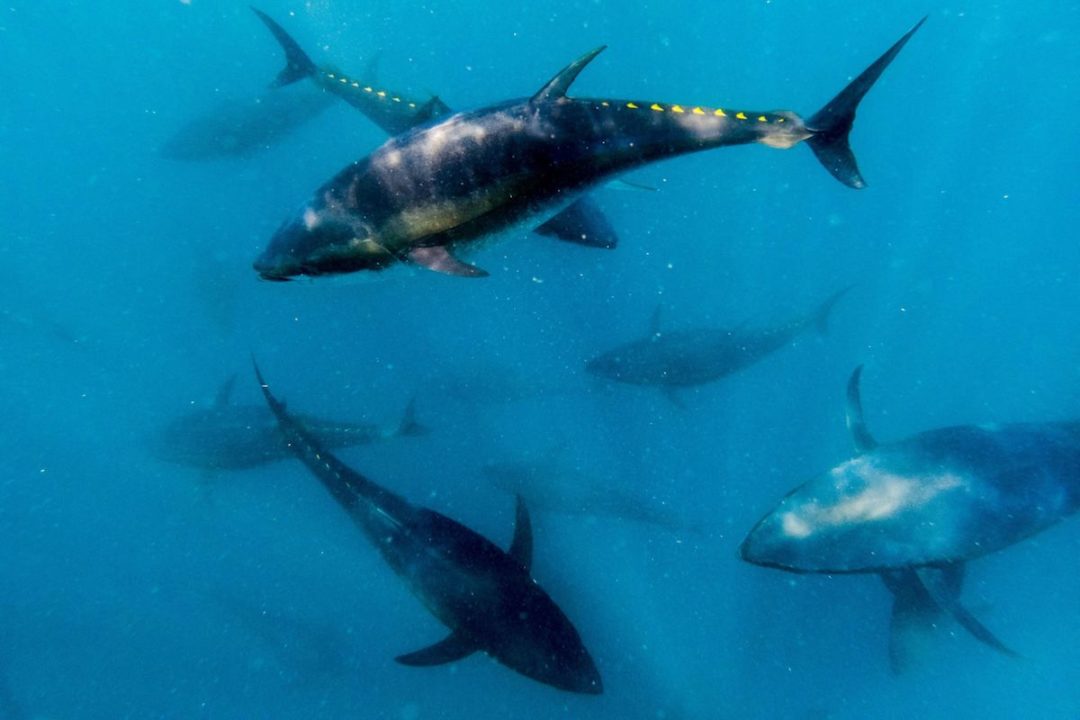
Visit Our Sponsors |
|
|
|
|
|
|
|
|
|
|
|
|
|
|
|
|
|
|
|
|
|
|
|
|
|
|
|
|
|
|
|
|
|
|
|
|
|
|

Scientists expect climate change to increasingly drive tuna into the path of potential deep-sea mining operations.
In a peer-reviewed paper published July 11 in the journal Nature npj Ocean Sustainability, researchers analyzed climate models to predict that the biomass of bigeye, skipjack and yellowfin tuna species will increase by an average of 21% by mid-century in the Clarion-Clipperton Zone, a vast region of the Pacific Ocean between Hawaii and Mexico that is targeted for mining valuable metals.
“These projected increases in overlap indicate that the potential for conflict and resultant environmental and economic repercussions will be exacerbated in a climate-altered ocean,” the study states.
The paper builds on previous research forecasting that rising ocean temperatures will cause tuna to migrate eastward toward the end of the Clarion-Clipperton Zone, where mining is most likely to occur.
Read more: Sam’s Club and Walmart Launch Enhanced Seafood Policy for Tuna Supply Chains
If mining proceeds, it could damage the $5.5 billion Pacific tuna industry in several ways, according to the researchers. Mining companies plan to send giant robots to the ocean floor — 13,000 feet (4,000 meters) down — to suck up polymetallic nodules (potato-sized rocks rich in cobalt, nickel and other metals). Mining would spawn sediment plumes that could spread over hundreds of feet or more. Once the nodules are transported to the surface and processed, another plume of mining waste would be released back into the ocean.
“That could potentially be at depths that would impact the breathing and feeding of tuna and the prey that they rely on for food, increase their stress hormone levels and have other consequences,” said Diva Amon, the study’s lead author and a deep sea scientist at the University of California at Santa Barbara. Tuna health could also be harmed by the release of toxic metals during mining, while noise and light from around-the-clock extraction operations could affect their breeding and migration patterns.
The study’s publication coincides with the ongoing meeting of the International Seabed Authority (ISA), the UN-affiliated organization that regulates deep-sea mining. The ISA is drafting regulations that could permit mining operations to begin as soon as 2024 in the Clarion-Clipperton Zone, but a growing number of its 167 member nations (plus the European Union) are calling for a moratorium or pause on seabed mining. On July 11, the Global Tuna Alliance, a consortium of retailers and supply chain companies, joined six other seafood industry groups in also calling for a pause.
Read more: U.K. Supermarkets Investigating Alleged Mistreatment of Migrant Fishers
The scientists say their findings underscore the need for the ISA to consider potential impacts on tuna fisheries. The organization does not currently require mining companies to take those impacts into account and does not factor them into its own regional environmental management plans.
The ISA has not yet issued regulations governing the depth of mining waste discharges. The paper noted that deep-diving tuna live as much as 500 meters beneath the surface, while their prey can be found at 1,500 meters. “Discharging below that would be a better situation for tuna,” Amon said. “But it’s going to be more costly and technically challenging for deep-sea mining operations, and mining contractors may not be incentivized to do that.”
Grantly Galland, a project director with the Pew Charitable Trusts’ international fisheries program, said regional fisheries management organizations — known as RFMOs, which are in charge of tuna populations in the Pacific — have not considered the consequences of deep-sea mining. “It's definitely not on their radar and really has not come up at a single meeting I've been to recently,” Galland said. He expects the new paper to change that, and to perhaps encourage RFMOs to join the ISA as accredited observers so officials can make their views known.
“Mining in areas like this one that are home to sensitive ecosystems and valuable fisheries should not be allowed unless we have the scientific knowledge to be reasonably certain that wildlife and fisheries can be protected from these new activities,” Galland said.
RELATED CONTENT
RELATED VIDEOS
Timely, incisive articles delivered directly to your inbox.

